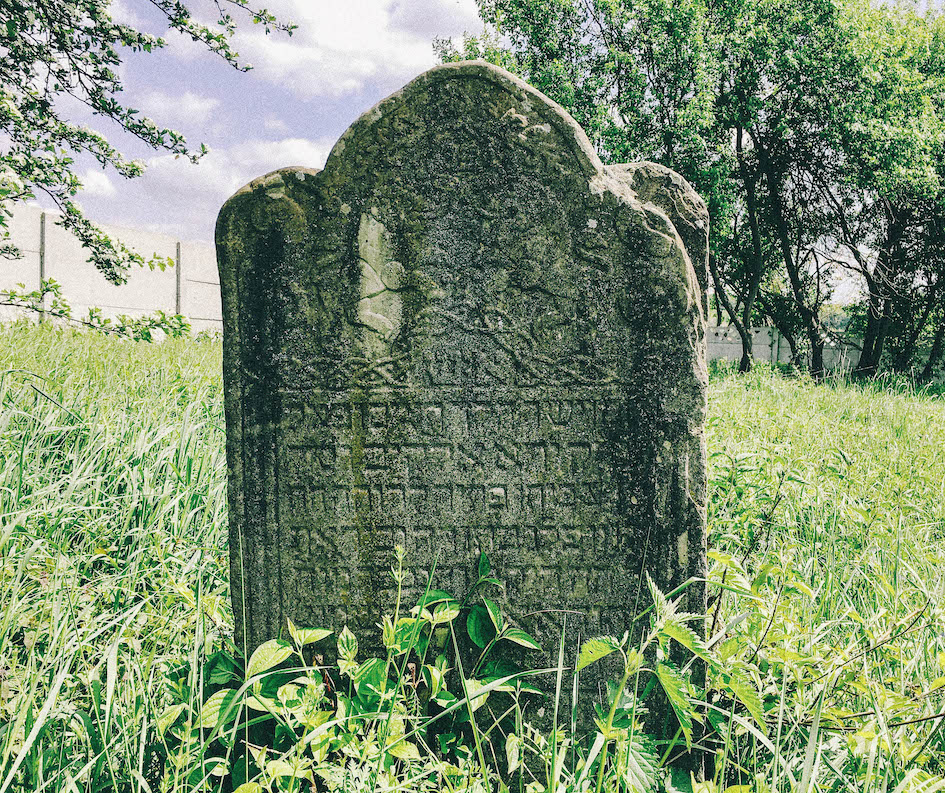It is really hard to find positive consequences in the lockdown, its restrictions and almost closed borders due to the coronavirus pandemic. Still logical thinking provides us with the luxury to do it. And the first thing that comes to mind is developing domestic tourism.
With this in mind, we would like to draw your attention not only and not so much to travelling over Ukraine, which is no doubt is an attraction unbelievably underestimated by Ukrainians themselves. But what about the arbitrary outskirts of our own towns and villages? The rough year of 2020 is prompting us to such explorations that may become indeed not only an exciting adventure but a hobby – to study, to discover and rediscover our native land.
This is exactly what was done during the lockdown by the Uzhhorodian writer Bandy Sholtes known beyond Transcarpathia and by the local guide from Mukachevo Maxim Adamenko.
The first one suddenly packed his things and went to Velyki Lazy (Major Lazy), a village some 10 km away from Uzhhorod. One may get there on foot, by bike or public transport or have a lift by one’s acquaintances or strangers. The other guy discovered for himself the village of Dertzen, some 20 km from Mukachevo, though he had passed by it dozens and hundreds of times before.
These two stories prove us once again that there are lots of interesting and little known things around us, and that we only need an impulse or an occurrence to get to know them. Thought this time it was the lockdown that became that very impulse but next time let it be simply a day off or a holiday.
Now we give the floor to the authors. Bandy Sholtes is the first to speak.
Attractions and mysteries in the village of Velyki Lazy (Major Lazy)
If someone had told me a few years ago that I would be now sitting and writing an article about Velyki Lazy, I would not have believed that.
For, just like many of you, I passed by the village, going along Kyiv-Chop highway for times out of number. But it never came into my mind to make a turn, have a walk and see for myself – who lives there and what interesting things may be found in the village.
Well, people indeed are inclined to look for beauty and exciting things somewhere over horizon, while not really knowing what goes on right under their noses.
It all began when I accidentally met a friend of mine, though a virtual one before that. His name was Misha. He told me about most interesting things there are in Velyki Lazy, since he was born there. Well and then the village being so close from Uzhhorod I suggested my friends to go there and see everything for our own eyes.
We first turned from the highway to the building of the old cognac factory. Did you know that yet in the late 19th century, Nandor Plotteni, a real count and a well-known violin and piano player, founded a distillery there? They produced wines and brandies from the local vineyards.

But why produce brandy? Not only because Plotteni liked the spirit but also it softens your vocal chords and it is useful for singers to drink it before the performance. That’s why the spirit was popular, brought profits and helped establish connections with opera singers and powerful people.
After the old count died back in 1933, the production site was inherited by his son, and after the World War II the Soviet authorities nationalized the brandy kitchen and it got called as a typical “sovkhoz” collective farm of Veliki Lazy. It still worked in early 2000s.
Then we went to the local Jewish cemetery, now cleaned and marked on a special map just a few years ago. And then we had a look at the Plottenis’ family palace, built back in 1896.
I had had no knowledge about this two-floored palace built in the neo-classical style, as well as about its owner. Though I should have to, for the life-story of the nobleman made interesting turns.
The young and gifted Plotteni had been discovered in Mukachevo by the world-known Hungarian violin player Edo Remeniy still in 1862. The latter happened to play for Queen Victoria and the American President in the White House. And in two years the young musician was accompanying Edo playing the piano.
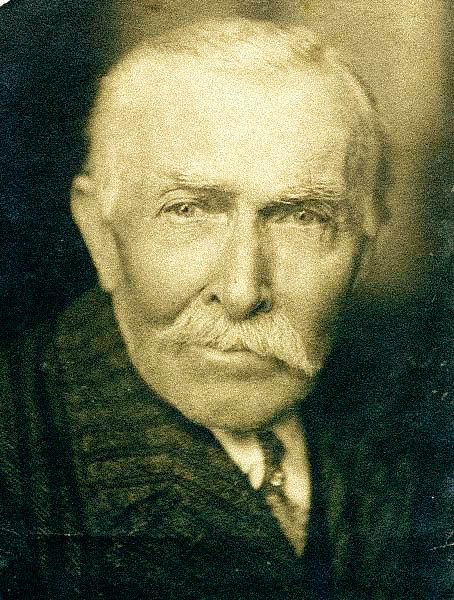
Нандор Плотені, фото з відкритих джерел
His first individual concert performed with a violin Plotteni played in Budapest in 1867. And in a few years he became the first violin player in the orchestra of the Hungarian National Theater, receiving a count’s title for his musical merits.
His wife was Eugenia McAlister, an English aristocratic lady. He lived for some time in Paris but came back to Hungary. He performed together with Ferentz Liszt and Johannes Brahms. He established musical schools in Transcarpathia.
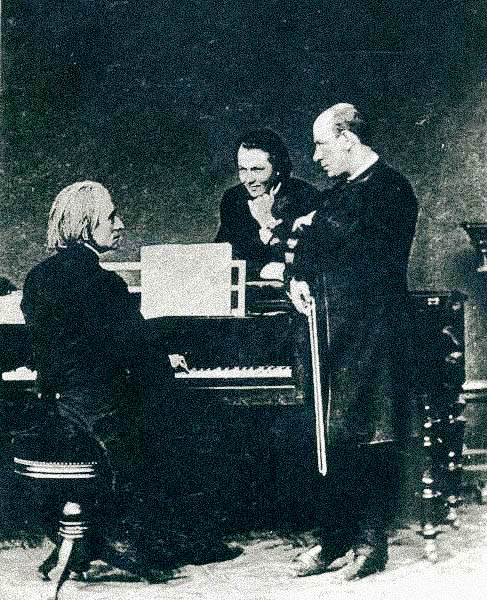
Ференц Ліст, Нандор Плотені та Еде Ремені. Фото з відкритих джерел
And what is more, apart from the distillery, he built a mill and grew breed vines. His vineyards and wine cellars eventually became a start for the well-known Uzhhorod cognac factory, since the first batch of cognac spirit was manufactured and bottled in barrels made of oak wood under the count’s supervision in Veliki Lazy. And it was by his recipe that the first barrel was filled in 1959 under the brand name of the Tisa cognac factory.
In 1890s, the family were living either in Budapest or in Uzhhorod, meanwhile building the palace. The count died in Budapest and was buried there.
And you know, judging by his bio, he must have had a good knowledge of at least three various languages, and most probably five.
Nowadays the Plotteni Palace holds the local Youth Creative Activity Center with many clubs. Six years ago two memorial boards were installed on the façade. There is a small park around the manor house, established by the count. We were shown the fretwork and the original heating system in the cellar. Taking into consideration that the palace once used to be the village council office and the village school, it looks well preserved. Although it needs some repairing, like almost all buildings of the type.
Then we walked over the local hill. On its top there used to be a seismic station once. By the way, this year, during the blessing the Easter bread, there was an earthquake in the village, with the magnitude of 3.5 points.
And then we walked along the touristic route of “The Plotteni Route” where the count and his son, together with their friends once used to go for hunting. Now it is used for picking mushrooms. The road leads along the nursery garden of the local forestry agency, by a water spring, a pond and a nice beech wood. In a word, the route has quite a lot of interesting points. But we were mostly impressed by the mines.
The thing is that during the Austrian and Hungarian period, geological surveying was conducted in the wood beside Veliki Lazy, searching for iron ore. It was then that the numerous adits and tunnels were made. We got into one of them, and it appeared an incredible experience for us.

Firstly, the adit, cut in stone is unexpectedly big, with many offshoots and even a second floor. And what’s more. We could walk in there upright.
Secondly, bats and badgers live in the adit, and the latter use a separate room as a toilet. That is they sleep in one place and urinate, if you pardon me, in another one. Well-bred they are, indeed. We didn’t find them at home, true, but that’s for the better, since I don’t think they need a stress with the unexpected guests.
And thirdly, the adit is a creepy place where you keep thinking if you will be able to find a way out and if an earthquake is not going to start this very moment, to bury you right there. So the faint-hearted people without a guide had better not to go there.
Well, and it is easy to guess that our guide was our new acquaintance Misha. To be precise, his name is Mihajlo Ivantsyk, and he is the head of the touristic club in the village. And I am sincerely grateful to him.
We spent half a day in Veliki Lazy and saw quite a lot of things we had never heard of before.
But sorry folks, I will not discover some details to you. For you know, some things cannot are just beyond any description and, as you will be going over there scouting, it will be more interesting to look for yourselves. Everybody sees something different in the same things.
Bandy Sholtes
All roads lead to Dertzen
As one of my woman friends once said: during this lockdown we have learnt more things about Mukachevo and Transcarpathia than for all the lives we have lived here!
So it happened in my case, with the village of Dertzen, close by Mukachevo, some 19 km away. The population makes up to 3 thousand residents, and 99.9% of them are ethnical Hungarians.
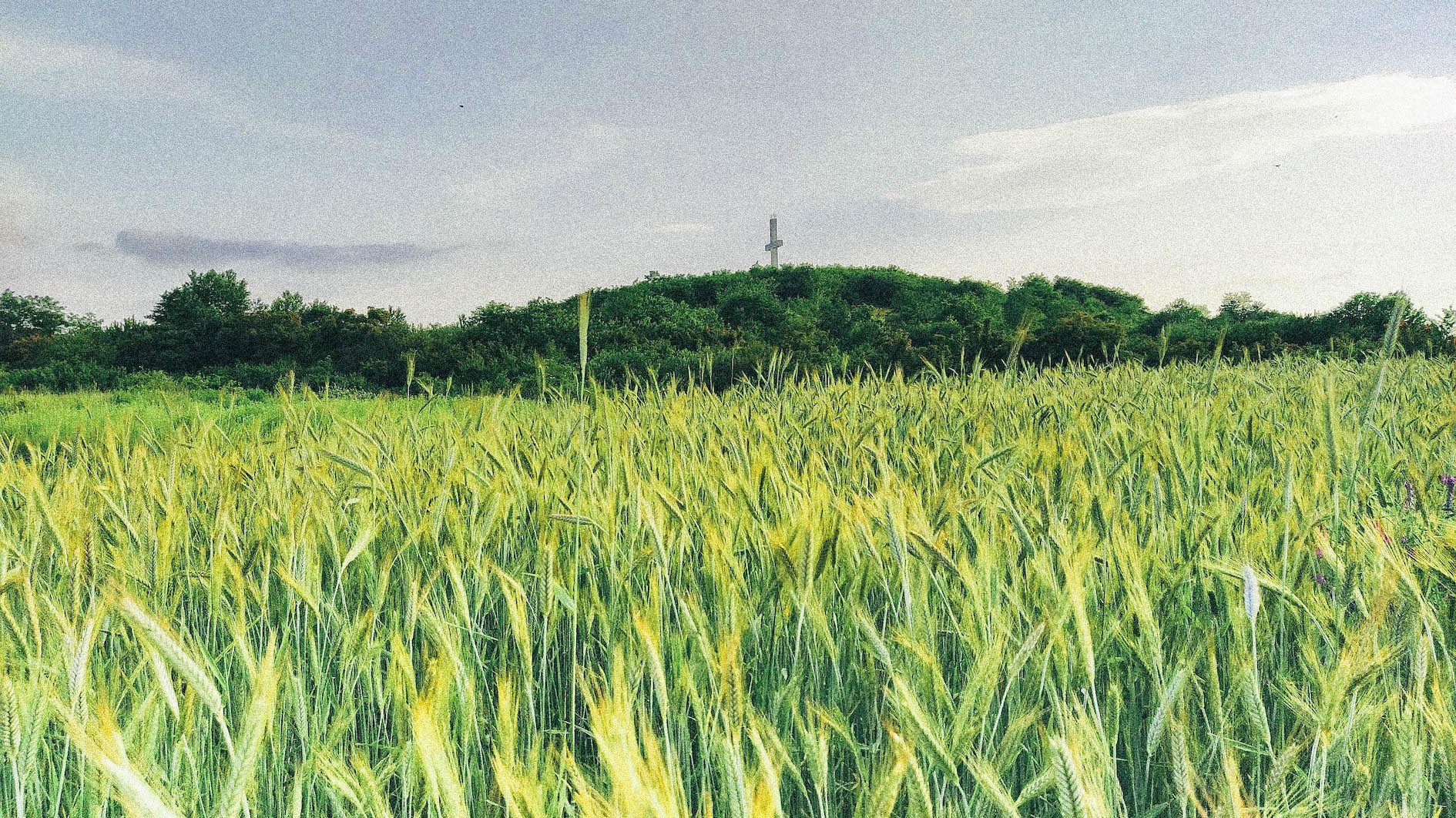
For many years I have often passed by the village, going with the M24 highway, from Mukachevo to Berehovo. From the highways you can have a nice view of the huge cross on the hill, under which Dertzen is located. But we never got around to visiting the village itself, there was no reason to do it.
I first appeared in Dertzen back in 2016. Now I cannot recollect the reason. At that time, I was working as the head of Mukachevo Tourist Center. I was recognized and kindly shown over all the attractions of the village. But I have really got to know the village in full only now, during running the project entitled as “The cultural route of the village of Dertzen”, supported by the Ukrainian Cultural Fund and the USAID. I have had to do many researches on records and archive info.
Surely, the most noticeable cherry on the cake is the cross on the hill, one of the greatest crosses in Europe, indeed!

The cross was erected at the top of the Dertzen Hill and is the main object in the memorial “The European Park of Reconciliation”, built in 2009 in memory of all deceased in the World War II from any country.
The memorial and the cross are supposed to remind the succeeding generations on the necessity to find common ground and not make war. The cross is 25.7 m high and is the highest one in Ukraine and the third highest in Europe.
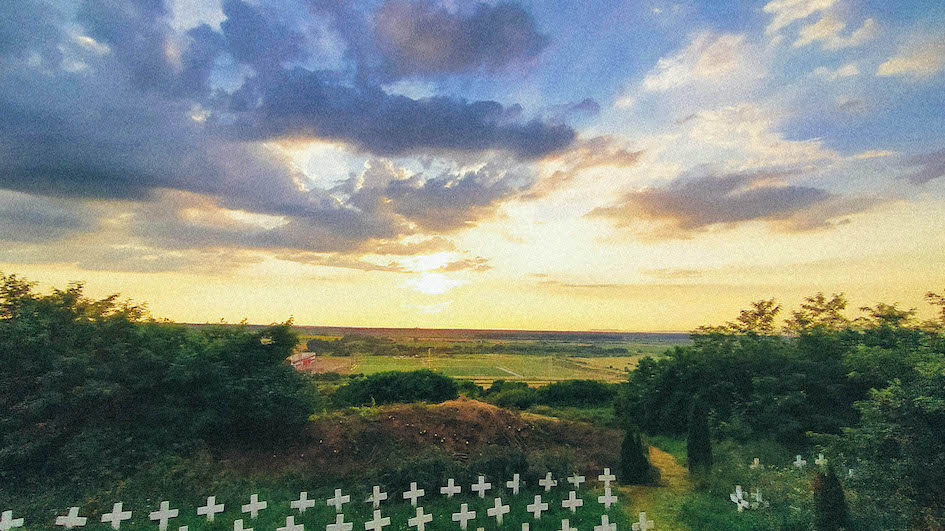
And from the top of the hill beautiful sights open up, onto the outskirts and the Carpathian Mountains! Right above the wood you can even see the Castle Hill with the Palanok Castle and the bell towers of Mukachevo’s churches.
One more attraction in Dertzen is the local fire station, with over 50 volunteering firemen carry out their service, all of them being the local residents of the village.
And do their service not at the station but at home. The firemen can be called by two mobile phone numbers delegated with every shift from one firemen to another one. The numbers are available at village council offices, shops and schools, community centers and among people around. After receiving an alarm message about a fire, the duty watch is raised, and in 10 or 15 minutes the car is driving to the call location. All the manpower work by volunteering.
During the last 15 years, the Dertzen brigade have put out over 500 fire cases! The fire extinguishing equipment and the tools in Dertzen are no less up-to-date as with their colleagues in New York!
And the third attraction in Dertzen, surely worth coming here for a weekend or any other day is the delicacies of Dertzen!
Firstly, it is a specially compiled menu, a tasting dinner of the typical Dertzen dishes: the shovdar (hammon), the kvasni vohurki (pickled sour cucumbers), bread with pomazanka (spread), the libo levesh soup with muy-holushko (goose broth and liver halushki ravioli), the Sehedinskiy goulash with meat and kupati fried sausages, the fanki nutcakes with plum lekvar jam and the palynka home-made fruit vodka.

By the way, the palynka (fruit distillation product) is produced in Dertzen in over than 30 varieties – from local fruit (plums, apricots, quince, pears, grapes, apples, raspberry) and foreign ones (guavasteen, orange, passionfruit vine). Kristian Birov, a local palinka producer, has reached a truly high technological skill in brewing these strong spirits.

The next degustation is a wine one. Ruslan Oros, a steady prize-winner of the Red Wine, the greatest craft wine festival, annually held in Mukachevo in January, offers 20 original wines during the tasting. His wines are mostly dry. The Degustation room is available for up to 30 visitors.
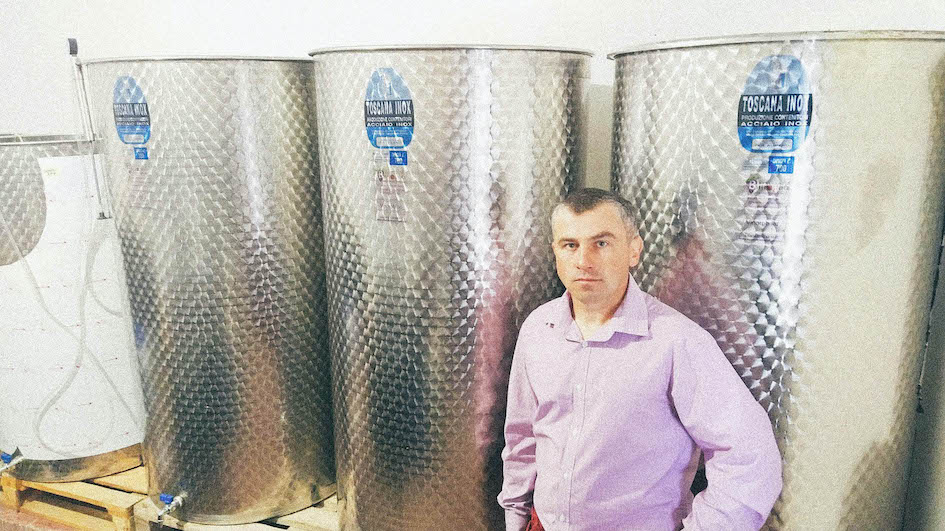
Few people know that there is a mineral water in Dertzen. It is called Carpathian Crystal Clear Water and is classified as table and medicinal iron-containing mineral water with low mineralization and gas. Plans are to build up a pump-room in the village central square, for every willing person to taste the water.
Apart from the list above, what is worthwhile visiting in Dertzen is the wedding ceremony, featuring dances, singing and rituals, named The Dertzen Wedding Party; the local Museum of regional studies, the Protestant church with a well-preserved working organ made in 1932, the local cemetery with the wooden grave-stones in the Kalotaszeg style of Transylvanian Hungarians and – the brand-new Academy of Football. Artistic plain air sessions, photo camping and cycling rides.
As I discovered Dertzen for myself and collected all of its attractions, I realized that a day or two will not be enough for visiting and seeing everything there is. So every time I am driving along the M24 highway from Mukachevo to Berehovo, I never just pass by but drop a visit to the village to one of the attractions. And I sincerely recommend to you doing the same.
Maxim Adamenko
The subject of tourism is planned as one of the main topics at the forum Re:Open Zakarpattia, due to be held on November 7-8 this year. One of the panel discussions will be devoted to strategies of turning tourism into a real driver of development in Transcarpathia and what is required for that.
The present content has been presented by the public foundation “Institute of Central European Strategy” supported by the USA Agency on international development (USAID). The details of the content is a sole responsibility of the above Institute and may not necessarily represent USAID’s point of view or that of the USA Government. Reproduction and using of any part of this content in any format, including the graphical or electronic one, copying or using in any other way without a relevant link to the original source is prohibited.
This project is carried out with the support of the USA Agency on international development (USAID), 2013-2020. Varosh is an online journal about Transcarpathia. Reprinting and using of the content published at varosh.com.ua is allowed under the condition of an open hyperlink within the first or second passage.






